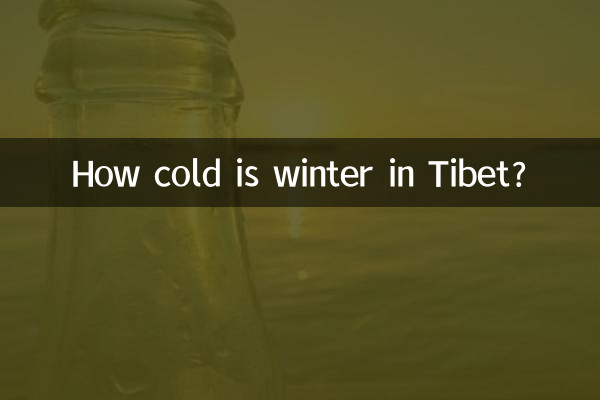How cold is winter in Tibet? Revealing the winter climate of the snowy plateau
The winter climate of Tibet, this mysterious and magnificent snow-covered plateau, has always been a topic of concern for travelers and geography enthusiasts. Tibet not only has unique natural scenery in winter, but its temperature changes are also quite distinctive. This article will combine the popular data and meteorological data from the entire network in the past 10 days to provide you with a detailed analysis of the temperature conditions in Tibet in winter.
Tibet has a vast territory, and winter temperatures vary greatly in different regions. Generally speaking, the average temperature in Tibet in winter (December to February) is low, especially in high-altitude areas, where the temperature is often below zero. The following is the average winter temperature data for major cities in Tibet:

| area | Average temperature in December (℃) | Average temperature in January (℃) | Average temperature in February (℃) |
|---|---|---|---|
| Lhasa | -2~10 | -4~8 | -2~10 |
| Shigatse | -5~8 | -7~6 | -5~8 |
| Linzhi | -3~12 | -5~10 | -3~12 |
| Nagqu | -15~-2 | -18~-4 | -15~-2 |
As can be seen from the table, the winter temperatures in Lhasa and Shigatse are relatively mild, while the Nagqu region has extremely low winter temperatures due to its higher altitude, with the lowest temperature reaching below -20°C.
The climate characteristics of Tibet in winter can be summarized as follows:
1. Large temperature difference between day and night:The temperature difference between day and night in Tibet in winter can reach more than 15 degrees Celsius. It is warm during the day when there is plenty of sunshine, but bitterly cold at night.
2. Dry and less rainy:Winter is the dry season in Tibet, with little precipitation and dry air. Particular attention needs to be paid to moisturizing and protecting against ultraviolet rays.
3. Cold in high altitude areas:Areas above 4,000 meters above sea level, such as Nagqu, Ngari and other places, have extremely low temperatures and frequent wind and snow in winter.
Although the temperature in Tibet is low in winter, it still attracts many tourists to experience the unique charm of the snowy plateau. The following are some suggestions for traveling to Tibet in winter:
1. Warming equipment:Down jackets, thermal underwear, gloves, hats, etc. are essential, especially for tourists planning to travel to high altitude areas.
2. UV protection:Tibet has strong sunshine and strong ultraviolet radiation in winter, so you need to wear sunglasses and apply sunscreen.
3. Adapt to altitude sickness:Oxygen levels are lower in winter, so first-time visitors to Tibet need to take rest and avoid strenuous exercise.
Recently, the topic of winter in Tibet has become quite popular on social media. The following are some of the focuses that netizens are paying attention to:
1. Is winter travel to Tibet worth it?Many tourists have shared their winter travels to Tibet, saying that although it is cold, the snowy scenery and peaceful atmosphere are unique.
2. Impact of extreme weather:Roads in some high-altitude areas are closed due to heavy snow, and netizens remind people to pay attention to the weather forecast in advance when traveling in winter.
3. Tibetan winter folk activities:Activities such as the Tibetan New Year and the Winter Dharma Ceremony attract many culture enthusiasts.
Winter temperatures in Tibet vary from region to region, but are generally colder, especially in high-altitude areas. Despite this, Tibet in winter still has a unique charm, suitable for travelers who like challenges and exploration. If you plan to travel to Tibet in winter, be sure to be fully prepared for warmth and altitude acclimatization to ensure a safe and enjoyable trip.
Through the structured data analysis of this article, I believe you will have a clearer understanding of the temperature and climate characteristics of Tibet in winter. Whether for travel or academic study, winter in Tibet is a topic worth exploring in depth.

check the details

check the details